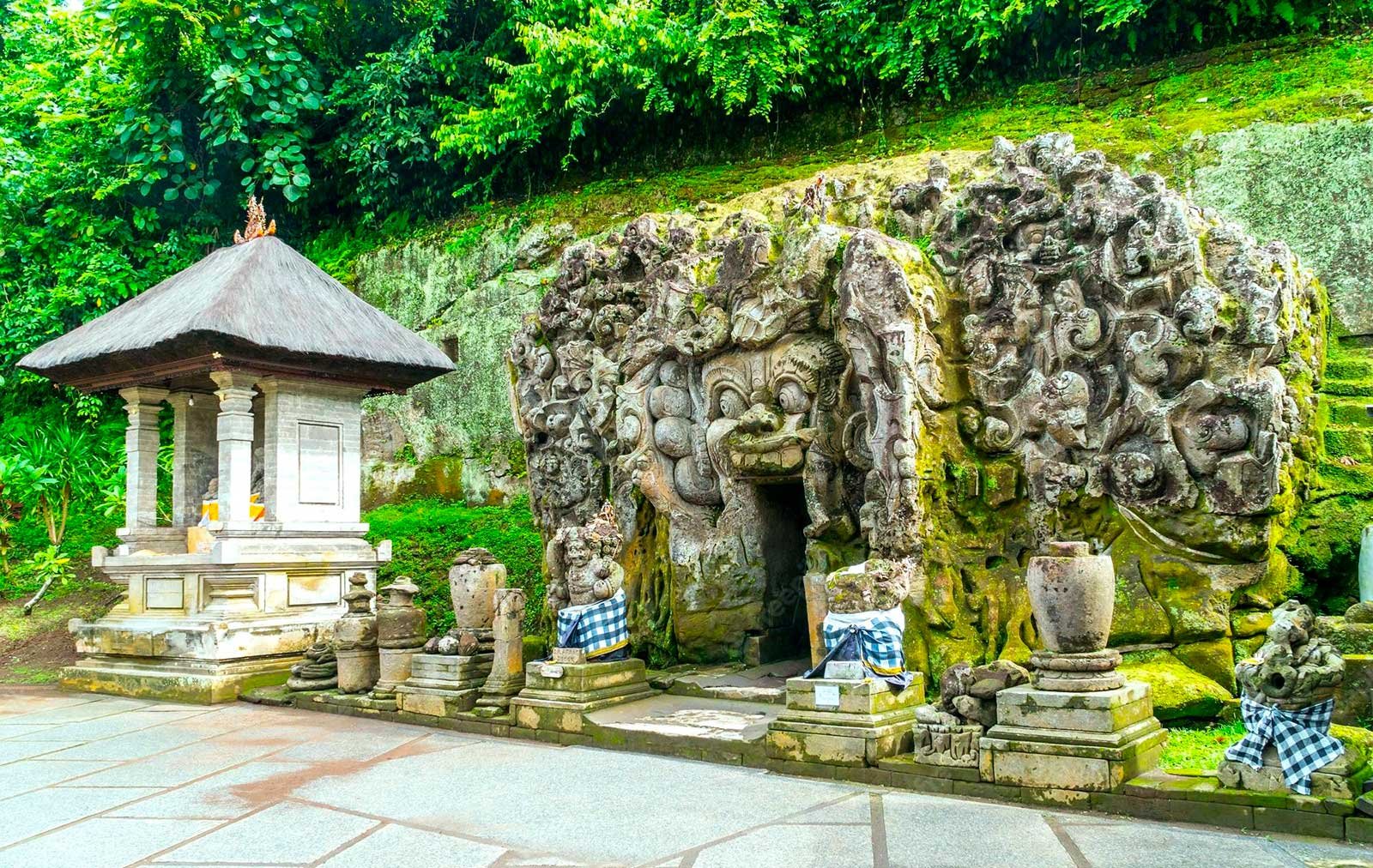Name History Of Goa Gajah
It is suspected that the word Goa Gajah comes from the word “Lwa Gajah”. In the Negarakertagama ejection composed by Mpu Prapanca in 1365 AD, there is the name “Lwa Gajah”. If interpreted, into Indonesian, then the word “Lwa” means river and Gajah which means a temple where Buddhist monks worship. So the name “Lwa Gajah” can be interpreted as a hermitage of Buddhist monks whose location is on the bank of a river.
Attractions of Goa Gajah Ubud
From the parking area to the location of the hermitage, tourists must go down the stairs. This place is surrounded by shady green trees, so the atmosphere is very cool and beautiful. According to the officer guarding this tourist attraction, the trees are hundreds of years old.
The whole Goa Gajah Ubud tourist complex can be seen from the stairs. When you reach the area below after going down the stairs, you will hear the gurgling sound of water flowing from the statue’s shower. Rocks from buildings that were destroyed by the earthquake were also found around the shower. Meanwhile, Goa Gajah Giayar itself is located not far from the fountain of the statue.
The uniqueness of Goa Gajah
The Goa Gajah tourist attraction is loved by tourists because it offers a lot of uniqueness. Then what are the uniqueness contained in this tourist attraction?
- The entrance through the mouth of the cave is only enough for 1 person.
- Outside the entrance there is a carving and 2 guardian statues.
- The inside of the cave is shaped like the letter T, about 2 meters high and 2 meters wide.
- On the left and right of the aisle there are also alcoves which may have been a hermitage inancient times. But now tourists can sit or lie there.
- At the west end of the hall there is a statue of Ganesha and at the east end of the hall there are 3 phallus.
- Apart from that, around the cave area, there is also a petirtaan statue with seven statues of widyadara-widyadari holding holy water.
- There are seven statues in total, which are symbols of the seven rivers in India, the birthplace of Hinduism and Buddhism.

Comment (0)